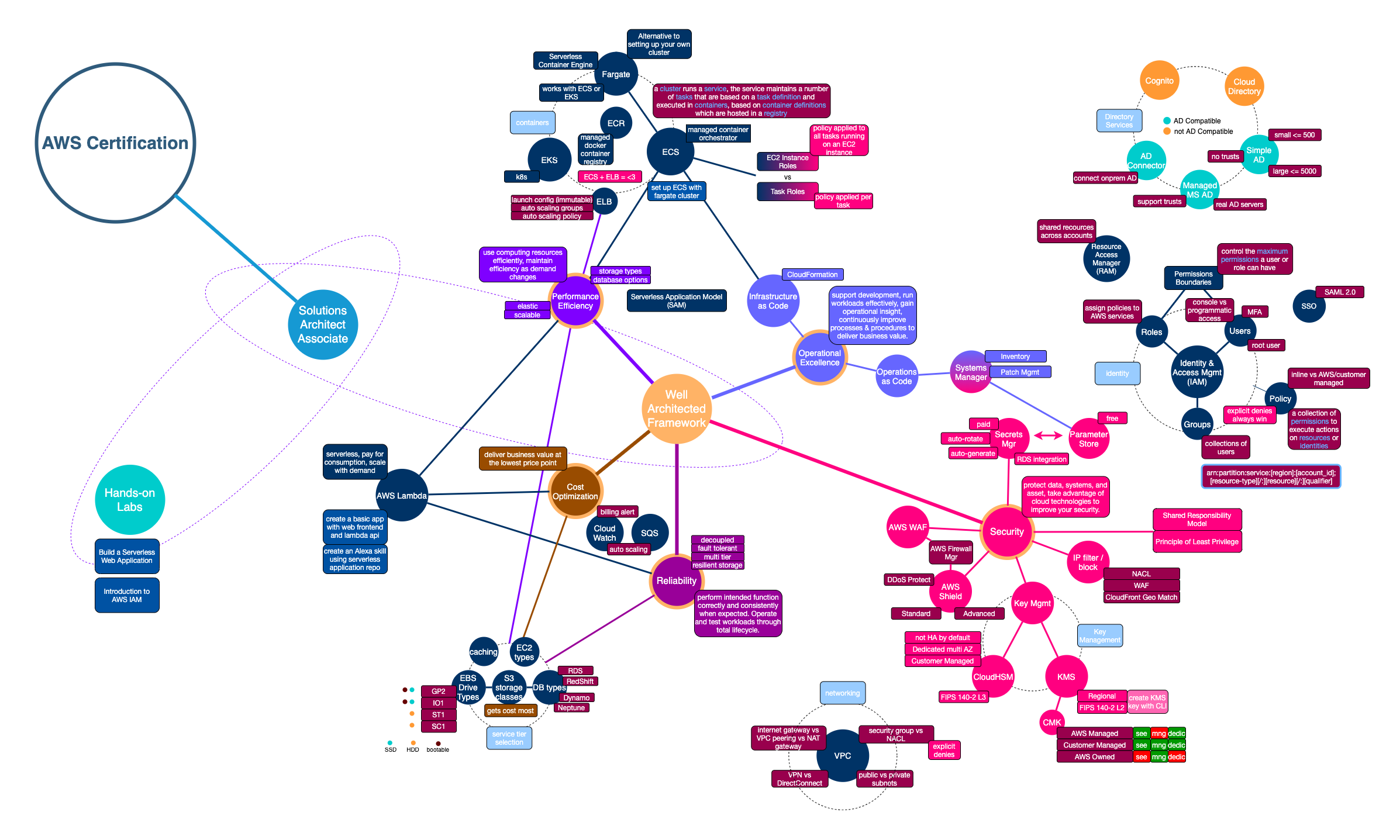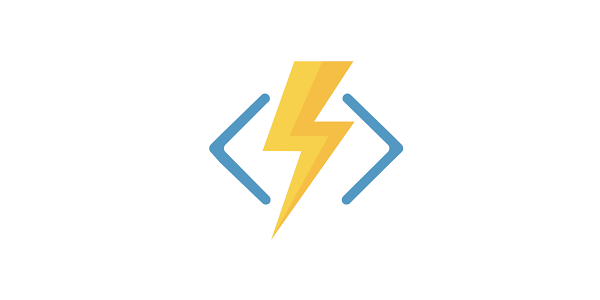At the start of 2021, after a year of Covid-19 craziness, I found myself ready for a new challenge. Prior to the lockdowns, I had been on a roll studying the Microsoft Azure Cloud, getting certified as a developer, solutions architect and finally (reaching my personal goal) as a DevOps expert. I felt that it would be of value for me to extend my knowledge by adding a second cloud (AWS) to the mix. I was not only interested in extending my technical skills but perhaps even more keen to try to discern over-arching principles and practices in infrastructure design and application development that were not bound to a single Cloud.
How I used to Study
While working on my Azure certifications, I used what you might call a “classic” method of preparing for the tests. I spent a lot of time with an online course (or two), consuming videos on all the topics required for the exam, and at some point when I felt ready I’d start doing practice tests.
The way I used the practice tests is worth noting: as the questions on these tests usually provide a link to more information regarding the topic they cover, I spent my first attempts answering questions wrong on purpose and copying down all the “more information” links for review. This was my way of identifying and filling gaps in my knowledge.
Essentially this technique worked for me. However, while I generally passed the exams I took, I never really seemed to live up to my own expectations as far as the scores went. I had a feeling that, for the amount of time spent, I should be scoring higher. Or looking at it the other way around, I should be able to get these scores with less study time. I also started wondering if my passive approach to study (watching video and reading) was really the best tactic if my goal was not just to pass a test, but to really grasp the field I was studying. Often the materials I mastered for the tests seemed to be gone from my head soon after, so was I really getting all I could out of it?
Regardless, I was ready to dive into AWS at the start of 2021. I had a training coming up at CloudSkills on the Solutions Architect path and I wanted to get the Cloud Practitioner certification under my belt in preparation.
It just so happens I had picked up a couple of audiobooks in the months prior and I was finding more time again to listen to them - I was no longer spending time in the car due to the lockdown, so my backlog of audio-books and podcasts had been growing out of control - I had started re-prioritizing my daily walks, so as they were becoming regular again I started bringing my headphones with me.
Specifically there are two books I “read” this way that I want to mention:
- “Ultralearning” by Scott H. Young, which chronicles the author’s findings on what he calls meta-cognition or meta-learning from years spent on projects such as learning 4 languages in a year to a high level of competency, or passing the equivalent of an MIT Computer Sciences degree in one year.
- “Make it Stick” by Peter C. Brown et.al., an overview of recent discoveries in cognitive psychology and other disciplines, the last chapter adds a set of concrete techniques and tips for becoming more efficient learners/teachers.
I had also previously read and greatly enjoyed a number of Cal Newport’s books. “Deep Work” is a book which essentially sparked my interest in the topics of focus and deliberate study.
While reading and walking, I realized I could use this new set of certification exams as an opportunity to experiment with a different learning style. I could apply what I was learning, while I was learning it, and incorporate the advise and techniques the books promote.
Disclaimer
I want to take special care at this time to make two points to you, the reader, about the contents of this article.
- Learning about learning is an ongoing discovery. I am still refining my methods and tweaking my habits to improve, based on results studying for exams. Therefore I do not pretend to have a magic recipe for ultra-efficient study, nor do I strive to tell you what to do when tackling exams and how to do it. I am only documenting my own findings and sharing them hoping others can benefit.
- I do not strive to spend the least amount of money possible on course materials in order to pass the exams. I still use online courses and preparation exams that often require me to pay. I pay for a PluralSight subscription and am a CloudSkills member. I regularly use paid preparation exam questions. While they are not essential, in my opinion they do offer benefits.
What I learned about learning
In this section I will try to outline the main lessons I learned about studying efficiently. The first point I’d like to make is this: there can be a big difference between mastering a subject and testing well on it.
Look at it this way: do you believe someone who can name all the European nations' capitals and can give you the start- and end-dates of all major conflicts, to be an expert on European history? No, right? Expertise requires a more intimate level of knowledge than trivia and dates.
I came to the conclusion that being an expert Cloud Architect is not only about answering questions correctly, it’s about being comfortable executing tasks in an environment, about comparing options given certain scenario’s and about designing solutions given the cloud services available. So how do we get there? Well, there are some key points to keep in mind.
Learning Should be Hard
Standard studying methods, re-reading and highlighting texts, watching videos etc. can give you the feeling of knowing a set of materials too early. Have you ever gotten the feeling while reading a new text during study that it immediately makes perfect sense? That you really kind of already know this because it’s all perfectly logical? This is a trap.
What happens is you become familiar with the wording of the text, the sentence-structure, and phrasing, rather than the actual materials presented. In order to avoid this, I strived to become a more active learner.
Retrieval is Key
Learning is the process of storing and accurately retrieving a piece of information from your memory. Whether it’s remembering the capital of Poland, or listing the five pillars of the AWS Well Architected Framework and their key principles, you are trying to walk the neural pathways in your brain to bring the correct piece of information to the surface.
Studies show that the act of successfully retrieving information will strengthen the neural pathway involved, making the next attempt at retrieval a little easier and faster. Learning in effect is like repeatedly traveling a road in your mind, transforming it from a shallow dirt track into an information super-highway.
The implication on study strategy is that simple repeated intake or information through your senses is not sufficient. There has to be an active component where you answer a question or solve a problem that builds on the desired knowledge. Only through diving into your memory and rooting around for the answer will the path become more traveled.
This means that reading and re-reading a text, or watching a video course, in itself will not suffice. You should instead focus on actively engaging your memory as often as needed to keep the information fresh, and start doing this as soon as possible.
Testing Early
I used to use practice tests as an indication of whether or not I was ready to sit an exam. I’d cram and consume materials, and then only when I felt like I was almost ready would I start testing myself. The goal at that point in time was to check what I knew and to identify gaps that needed revision.
This has changed. Today when I start a study session on a topic the first thing I do is look for some test questions to answer. I do not need a full practice exam or a set of 50 questions. I want about 5 specific questions on the topic I am about to study.

You might ask why. Well, I use the questions to trigger conscious effort by contemplating the materials. I may not have studied it yet, but trying to answer a question up front will force me to consider existing knowledge, tie in things I learned earlier and all together be more attentive of what is being asked. Instead of just coasting through because I know the answer, I must look at the question more closely and try to piece together an answer.
I’ll add that if there are no ready-made questions available, I will try to come up with my own as soon as possible while studying. This not only gives me something to work with, but also ensures that I pick my own wording for the question so I don’t fall into the trap we discussed earlier of mistaking recognition for knowledge.
Staggered Learning
See if this looks familiar: I made a high level list of the table of contents of two online prep courses for the AWS Solutions Architect exam. They shape up roughly like this:
- IAM and S3
- EC2
- Databases on AWS
- Advanced IAM
- Route 53
- VPCs
- …
And like this:
- Fundamentals : IAM and EC2
- HA and Scaling: ELB and ASG
- Storage: EBS and EFS
- Route 53
- S3
- …
Each section is between 30 minutes and several hours in length. When studying these courses I would start at chapter 1, go through it completely, move on to chapter 2, then 3 and so on.. Generally speaking each section consisted of theory, perhaps followed by some labs, often finishing with a practice test to see if I remembered what I am supposed to learn. I often spent multiple hours of uninterrupted study this way covering one or maybe two subjects, in succession. This is called stacked learning. It is illustrated in the table below.

As it turns out, research shows that organising effort into short, varied bursts of study on a mix of subjects has a positive effect on retention. So instead of starting with topic A, spending a few hours on theory, labs, testing, and then moving on to topic B for more of the same, it has value to interleave subjects A, B, C more quickly. Starting perhaps with an early set of trigger questions on A, a short text, then a video on subject C followed by a lab on topic B. A path not unlike the one shown below.

Unfortunately this method of staggered learning does not intuitively feel like the best approach. While studying it often seemed like more effort was required and I was having a tougher time in general. But remember that learning should be hard. So armed with a bit of background information, perhaps you can give it a try and break up your studies into short and varied activities.
Another aspect of staggered learning is overall study duration and spacing. Spending one hour a day, every day is more effective than spending 8 hours on a Saturday with your nose in the books. Try to go for regular, shorter intervals of focused work rather than the big weekend cram.
Mental Models and Mindmaps
Learning new materials is all about building your own mental model of how things work. You create a representation in your head of how you believe things are interconnected, how theory and practice fit together and how to execute certain tasks. As you continue to gather knowledge, you either refine or challenge that internal model. This can mean adding details, re-ordering relations or completely tearing down certain sections in light of new information.
I discovered a great tool in the use of mind-mapping software to support this effort. Mind-mapping allows me to create a physical manifestation of (parts of) my mental models. Not only does this give me a new way of viewing this information in a structured way, it also forces me to “re-encode” the incoming information - be it auditive, visual or tactile - into a new form of representation that I control. This breaks me away from the formatting of the source materials and immediately gives me an opportunity for reflection.
 I believe so strongly in the value of mind-mapping, that I actually decided to share the mind-maps I am creating while studying for the AWS exams. So if you are interested in these, head over to https://mindmaps.leanfield.io
I believe so strongly in the value of mind-mapping, that I actually decided to share the mind-maps I am creating while studying for the AWS exams. So if you are interested in these, head over to https://mindmaps.leanfield.io
Mind you, while I do hope you will find value in these maps, I mainly share them as inspiration for you to create your own versions of these while studying. As I said, they are meant to represent YOUR mental model, so go ahead and give it a go. There are a ton of options to help you create the maps, I used the online tool at draw.io to create mine.
Mnemonics
I am sure many of my readers are familiar with mister Roy G. Biv. For those of you who are not native English speakers, I bet you might know one of his close relatives (like his Dutch cousin Rog). ROY G BIV is a mnemonic for remembering the colors of a rainbow in order (Red, Orange, Yellow, Green, Blue, Indigo, Violet).
A mnemonic, derived from the Ancient Greek word μνημονικός (mnēmonikos), meaning ‘of memory’ or ‘relating to memory’, is a device, tool or pattern designed to assist in remembering information. Mnemonics can range from simple words or phrases, over little rhymes to remember important dates in history or the number of days in each month, to entire virtual walks through an imagined space in your head filled with objects and people representing information, so-called memory palaces.
My advice is simple: use mnemonics where applicable. I use them whenever I can. As there are many types of mnemonics suitable for encoding different kinds of information, giving a complete overview here would take us way beyond the scope of this article. I will settle today for putting them on your radar as a great tool and encouraging you to do some research and to actively look for ways to use mnemonics to help you in your studies.
Conclusion
So here we are. I believe I covered the most important lessons I learned about learning. So far my results are pretty good. I passed a first exam with a score over 95% and am working on my goal of gaining the DevOps Professional AWS certification.
As I mentioned at the start of this article, my goal in writing was not to sell a perfect solution for learning, only to share my own ongoing journey. Perhaps I can inspire others to view their continuous learning as an opportunity to experiment and try out new techniques. So best of luck to you all!


